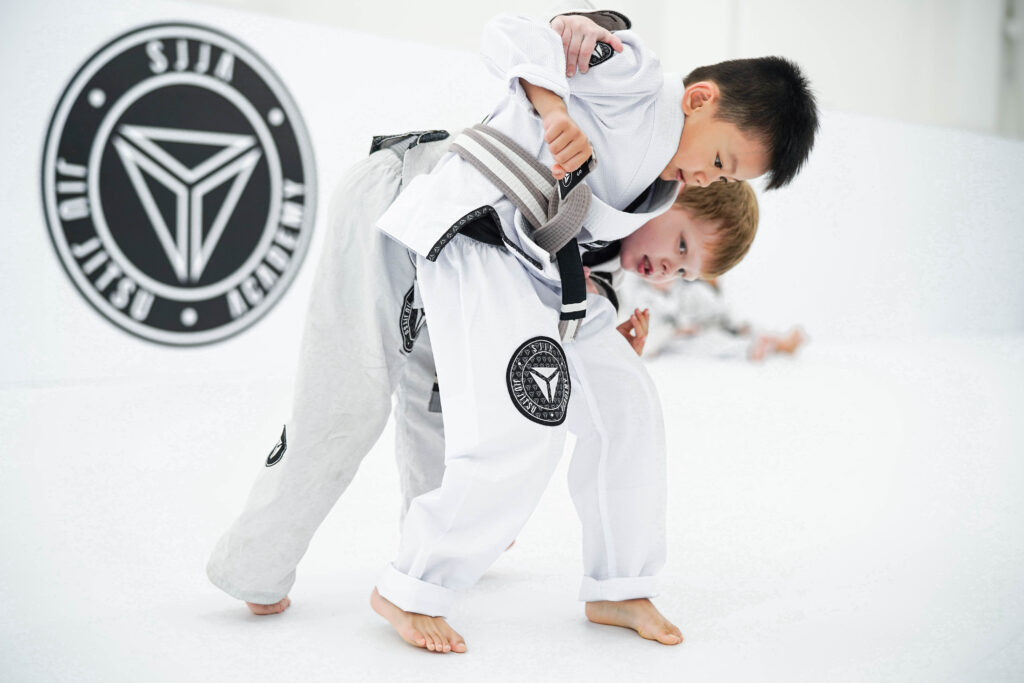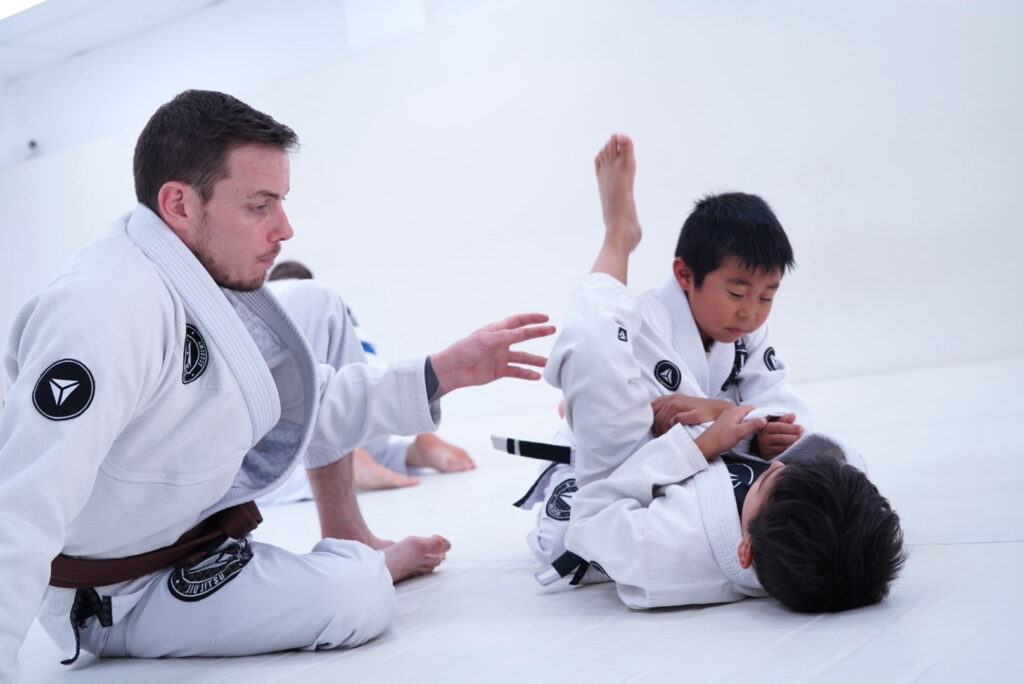
In this month’s blog, we interviewed one of our star jiu jitsu kids – Flynn, who practices both BJJ and Taekwondo and shares some interesting insights he has observed on the nuances and benefits of jiu-jitsu, compared to taekwondo.
what are some of the differences you’ve noticed between training bjj and taekwondo (tkd)?
I like training both of these martial arts, but there are a few additional benefits I get from BJJ. Specifically, I’ve noticed four key differences between jiu-jitsu and taekwondo:
1. Perfecting a technique: In BJJ there is a greater focus on refining/perfecting technique, as opposed to copying a technique shown to you by instructors a few times. This makes the outlook for BJJ more introspective, observational and self-developmental. By contrast, the striking arts are much more externally focused, and the focus is more about learning a greater volume of techniques to showcase, and in turn, there is less focus on the refining/perfecting of those techniques.
For BJJ we frequently have to modify techniques so that they will work for us, as opposed to striking arts, where there is more “apeing” ie. lots of quick punching and kicking. Something I also noticed is that there are some black belts in TKD with not-so-great technique when it comes to their punches and kicks, and if they connect with something solid or a moving target, they fall off balance or hurt themselves. This is because some students advance to black belt by completing katas only (i.e. patterns of movement), as opposed to sparring, where you have a moving target against you. When you’re sparring against someone, you have a moving target, and consequently, there’s more of a need to focus on and improve your technique in order for the movement to be successful.

2. Mastering each belt: In BJJ I’ve noticed the focus is to be the best version of the level you’re at (be it a grey belt, a yellow belt or blue belt, etc.), whereas, in TKD, there is a constant push to grade to the next belt/level. I like that about BJJ – people don’t really care as much about what belt you are, and people are really focused on becoming a really good grey belt, or a really good blue belt, as opposed to trying to rush to black belt as quickly as possible.
3. Learning how to read situations: In BJJ we are thinking about how to react, instead of just reacting, which is a lot of what happens in taekwondo. This is the case for most striking sports: someone is about to punch you, so your skill in taekwondo a lot of the time comes down to your reaction time – how quickly can you react and get out of the way of the punch. In jiu-jitsu, there is more time to think about how to react, and as a result, you learn how to read situations.
4. Discipline in class: In TKD when instructors are demonstrating techniques, students are quiet, but when practising/executing the techniques there’s a lot more noise/chaos when the kids are not supervised as closely. By comparison, when drilling/practising technique in BJJ, quiet discussion with your partner is required to get the technique correct and ensure your partner doesn’t get injured. The lower level of discipline in TKD classes makes it a bit harder to focus on correct technique in classes because there’s a lot more noise/distractions going on.

Explore diverse martial arts by clicking here to learn about the most effective self-defence discipline. Discover firsthand insights from our professor as he shares his personal story and explains why he believes Brazilian Jiu-Jitsu stands out as the ultimate martial art for self-defence.





